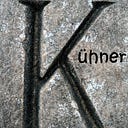The “Christian Flag” of white identity politics and Christian nationalism
“Soon there were hundreds of duplicates, and hundreds of wavers of Christian flags. All meant, ‘I have to go potty.’” — Martin E. Marty
By one recent conservative estimate, a quarter of a million Christian churches display the so-called “Christian flag.” But after I saw it flying over a new fast food restraunt in my area (photo above), I decided to investigate the history of this (religious? political?) banner. What is it? When was it created, and why? And how has it be used or abused throughout its history?
After creating this blog post with some of my preliminary findings, I also decided to update the Wikipedia article on the topic. And I got a little carried away (interjecting my original research)— and lazy (primary rewriting the summary to better reflect what I had learned about the subject, which conflicted with the existing narrative on Wikipedia). So my new summary really created a whole new narrative about the flag and did not therefore summarize the rest of the article — as any good summary should do.
As a result, my Wikipedia edits were quickly reverted by a editor, and I subsequently had an interesting exchange on the Talk page with him and three or four other (conservative) Christians who all agreed that my updates to the article were “fantastical” and “false” and gave undue weight to “a couple minor incidents among millions and millions of churches that use the Christian Flag.” This exchange, of course, only inspired more research — and, now…a new eBook!
For some, the so-called Christian flag is an ecumenical symbol of religious unity which “has come to occupy a place of notoriety and distinction among Christians around the world” (Stephen Flick). For others, it’s a symbol of “northern liberalism, abolitionism, theological liberalism” and a “one-world ecumenical universalism…contrary to Biblical Christianity, American Constitutionalism and plain common sense.” To others still, it’s a sign of nationalism, civil religion, “strife and idolatry” (Micki Pulleyking), and the brunt of jokes about marauding crusaders (Martin E. Marty). And that’s just the opinion among the Christians!
While all sides agree that the “Christian flag” was created by a Sunday school superintendent in Coney Island (1897), few seem to know the full story of the still-muddy origins, history and ongoing controversy of America’s “Stainless Banner” of (White Protestant) Christianity, or the trial (and acquittal by American Methodists, for heresy!) of the author of its original pledge. Fewer still perhaps, like me, know much about the creator of one of the early competitors to today’s “Christian flag” — The Conquest Flag, spotting an omnious phrase, which was designed during President McKinley’s funeral and adopted by the International Sunday school convention in 1902.
S.M. Johnson’s 1903 book, The Story of the Conquest Flag, was described as a “religio-patriotic volume” by the Religious Telescope (Volume 69) who noted that, “the purpose of this book is to give the history and the object of this ‘conquest’ movement.” The book is currently out of print, but as I write this there is a used copy of a 2008 reprint available on Amazon for $77.86 (USD). If I make that much profit off my forthcoming eBook (see below), I’ll consider purchasing it. In the interim, I purchased the only antique 1910 flag pin and 1914 rally button currently on eBay for about the same price.
As a founding member (and current president) of the Hickory Humanist Alliance and a personal friend of Steven Hewett, I understand full-well the emotions that this flag generates in some. But growing up in a United Church of Christ in the rural South, my own attitude had been one of indifference. While Steven’s experience in King, N.C. spiked my interest in the flag itself, as well as reinforced my concern about religious symbols on public property, the sight of it flying over a fast food restraunt in my own neighborhood was the trigger that led me to uncover an interesting story with ongoing relevance. I believe this story should be more widely told — with better documentation!
Therefore…
Note This post has been updated since it was originally published. The original content contained herein will be included (with updates and additional information) in my eBook publishing on January 26 — the date that the state of Louisiana seceded from the Union (you’ll have to read the book to discover why this date is significant in this context). While I still believe, as the title of this post suggests, that the so-called Christian flag too often represents white identity politics and Christian nationalism today, I now have a greater appreciation of its creator and pledge author and a better understanding of its fans and critics. And some more research and writing to do…
For those still here, and curious: vexillology comes from the word vexillum — a flag-like object used as a military standard by units in the Ancient Roman army.

